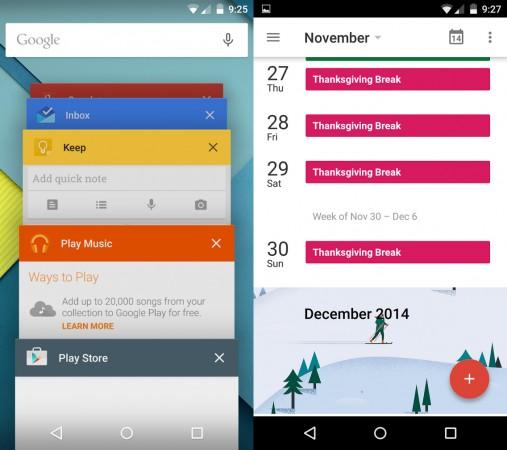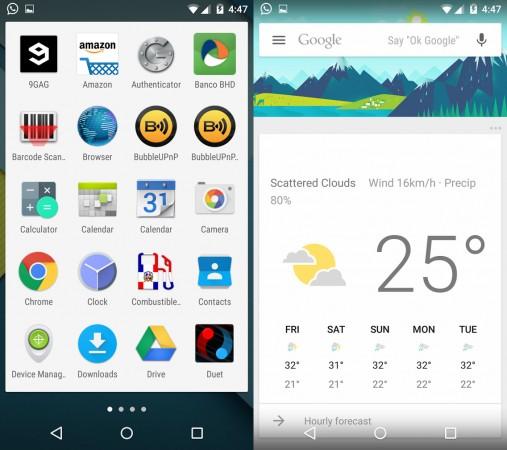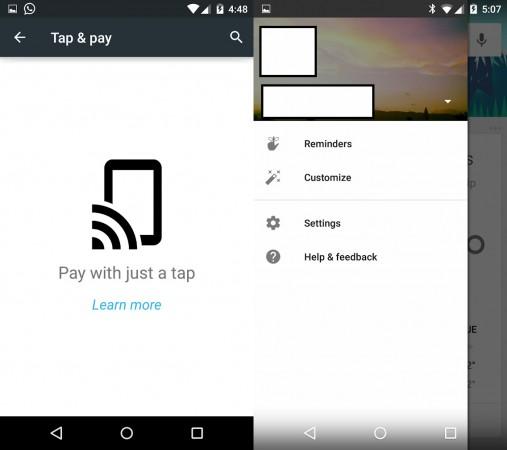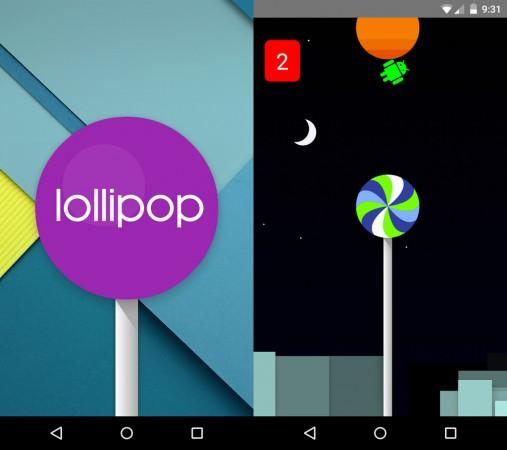
Android and iOS both are having their own set of followers. While they religiously stick to their platform by flaunting their loyalty over the platform, they sometimes act as an evangelist too with their own set of reasons.
The reality is both the platforms are nice with hardware integration, well-designed interface and a powerful kernel.
While Google's recently-released Android 5.0 Lollipop has several significant changes, Apple's latest operating system (OS) is also powerful in its own way. Let's discuss in detail.
Design
After introducing the normal 2D-based icons and interface for iOS 7, Apple preferred to stick to the design as it proved lean on the system and consumed less memory than the 3D-based icons of iOS 6. And since then Apple didn't do any significant changes on the interface design.
From the beginning of the Android era, Google preferred the openware philosophy of Linux platforms and stuck to that. The Android stock interface was not very significant till the JellyBean version. That's why most of the Android-based smartphone manufacturers chose to create their own layer of interface over the OS.
Android's most successful design was the Kitkat and with the latest, Android 5.0 Lollipop, Google worked extremely hard to make the interface look good with less memory. The Android users should certainly be tempted with the design of Lollipop. The latest material design looks impressive with a decent choice of colours for the icons and the background. On the other hand, the iOS's latest update looks just the same.

Features
If you're lucky enough to experience the Android 5.0 Lollipop, you must be aware about the addition of new features comparing to the earlier, Kitkat. Android 5.0 Lollipop has introduced a different profile addition, great looking lock screen with Google's concept of openness. The notification and settings area has also been greatly revamped from the earlier version.
On the other hand, iOS remained simple from the beginning. If you closely notice an iOS device you'll feel how logically designed their interface is. The iOS interface can easily be considered as a model for interface design. Every panel is logically drawn with proper aspect ratio, every icon laid in such a way that the user won't have any difficulty in manipulating the device.
Yes, Apple kept the design almost similar to the earlier one, but IB Times thinks it's the perfect time to retouch it and we are quite sure the Cupertino-based iPhone maker will certainly start thinking about this.

Security
The smartphone has become such a part and parcel of our everyday life that it's difficult to contemplate functioning without it. If a device is so dear to you, its security becomes even more essential.
We heard that Android is the most vulnerable operating system on the planet. Everyday hundreds of malwares and Trojans are injected to the system. But this is only one side of the story. Actually, being the most popular operating system, Android has certainly become the target of several unethical black-hat hackers.
On the other hand, Apple systems were always considered as secured for their close architecture and encrypting ability. But recently in China, some black hat hackers were able to create a backdoor on the iPhone and other Apple devices.
Though Apple quickly reacted to the situation to bring out the essential patch, we can't say the incident won't be repeated again.
Having said that, the concept of fool-proof security probably does not exist. And thank God there are people around us who raise their finger and point out the manufacturer "see, where you left." For them, actually the developers are constantly busy to improvise the system and hence the end user becomes the real beneficiary.
On the other hand, Google has decided to make it more secure than ever by adding a device encryption ability which will automatically lock your data on lost or stolen devices. The enforcing of all its application into SE Linux will also be able to provide better protection against malware and other vulnerabilities. SE Linux, a key feature of Samsung patented Knox technology, will also be able to protect the data by isolating it from the rest of the devices. Integration of Knox into Lollipop is a smart move and it may lead to winning over more users who preferred to stay out of Android mostly for security concerns.

Performance
Nexus 9, the latest Google tablet uses NVIDIA Tegra K1 chipsets. By installing the chipset, Google is giving a green signal to 64-bit computing, the most essential feature of mobile computing. Though Apple introduced this feature with their previous OS version, iOS 7, Google has followed the 'better let than never' policy.
The 64-bit computing ability will allow the future system-on-chips with a 64-bit capacity. These chipsets are actually more powerful and a better manager of system memory. Android Lollipop will also support ART (Android RunTime) Library which will be twice as fast as Dalvik, the previous version of Android Run Time. The users will also be able to switch between both the modes in Settings->Developer Options->Select Runtime. ART will reduce installation times, consume less storage and use less battery life than ever.
#mce_temp_url#Recently a Quaora user, Glyn Williams has shown that Android applications consume three times more memory than their iPhone counterparts. The Android apps actually use Java hence they recycle released memory in form of garbage collection. In this form of memory management, the garbage collector attempts to reclaim the 'garbage', or memory consumed by the objects which are kept idle or can no longer be used in an app. This memory management is often portrayed as the opposite of manual memory management.
On the other hand, iOS uses a different form of memory management. Thus a 1 GB RAM often performs equal to 3 GB worth RAM of an Android system. But we are pretty sure Google will soon respond to this problem and find a way out of it.

Battery
This is a major concern for Apple. The Android JellyBean was a memory drainer but in KitKat, Google improved the consumption and with Kitkat, Google made such significant changes so that it performs better. On the other hand, iOS developer Apple has improved the battery consumption but they still have a long way to go.

















